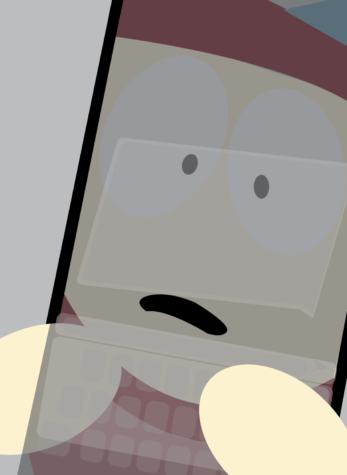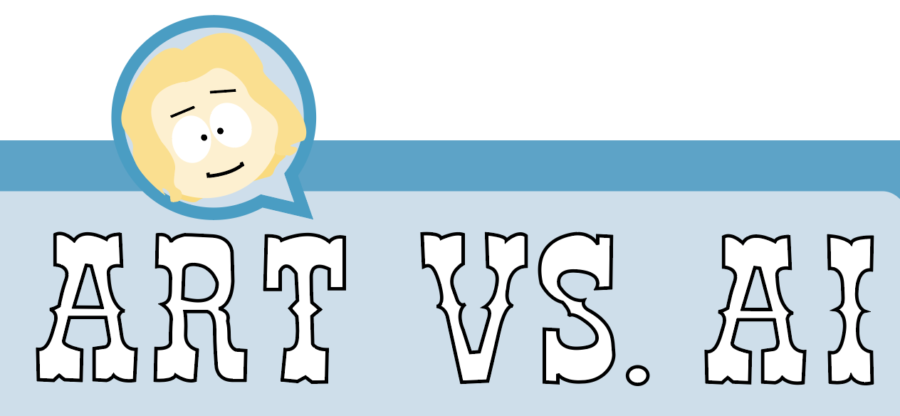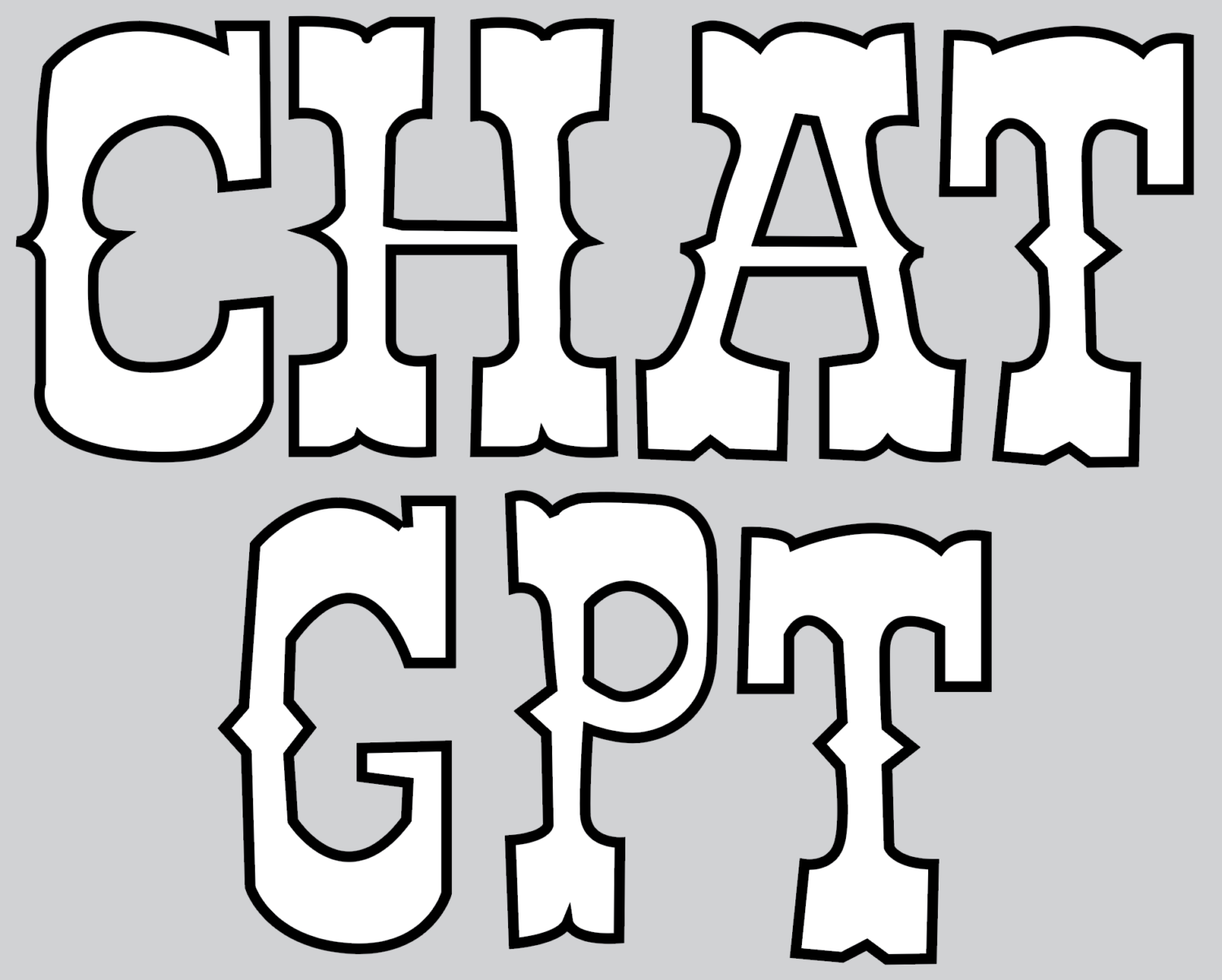Revolutionizing Our Future
Students, staff give insight about artificial intelligence, ChatGPT
April 17, 2023
 Even before the advent of AI, science fiction authors have been worried about a man-made superintelligence taking over the planet. In the twenty-first century, AI is a very real thing, but we are still wary of a robotic uprising.
Even before the advent of AI, science fiction authors have been worried about a man-made superintelligence taking over the planet. In the twenty-first century, AI is a very real thing, but we are still wary of a robotic uprising.
More practically, we use AI to help us do menial tasks and make our lives easier.
In late 2022 and early 2023, the world saw the rise of a new wave of advanced artificial intelligence that is now capable of generating art and images that look photo-real, or of writing an entire essay for your AP Lang class.
Read on to learn about the constantly evolving world of AI, students’ and staff opinions.

In a constantly advancing world of artificial intelligence and text-generating programs like ChatGPT, it can be difficult to know what the technology we’re using really is. Technology Integration Specialist Keil Pittman has taken on the role of optimistic advocacy for the use of AI at Blue Valley.
“I think ChatGPT is an amazing resource,” Pittman said. “I am looking at it more like I would look at a calculator or the internet when it first came out. As an ELA teacher, my knee-jerk reaction is always going to be, ‘Oh, this is where we aren’t going to teach writing anymore.’ Because do we need to know how to write if it’s just going to? I think the answer is yes, but being a technology-ELA guy, I’ve used spellcheck for a long time and I don’t let spellcheck do everything. But if it underlines something I investigate it, and I make that decision.”
By looking more into the way ChatGPT works, and how it responds to his prompts, Pittman discovered more than he expected.
“It’s so much more well-rounded than I thought; it handles sports questions just as easily as it handles in-depth ELA research topic prompts — I’m just amazed at how much thought and content it generates,” he said. “It’s not always awesome, and it’s not always accurate, but it can give us a lot of content to consider.”
New AI technology has expanded beyond just text generation into image generation as well.
“We recently this year purchased a Canva subscription for the entire district. Well, Canva now has an AI text-to-image feature. For my job working with websites, it’s far better for me,” Pittman said. “Since we’ve had Canva, I’ve had more luck creating my own images, so I’m not out there trolling for images that are not mine that we’re going to use for Blue Valley purposes. That’s the plagiarism piece and the copyright issues. I can save time by just typing in a little bit, and I’m not an artist, but it will render something usable, and that’s pretty cool.”
One of the main concerns teachers and administrators might have is the difficulty of catching students using AI to write their assignments for them.
“If you copy and paste from a website, we put it into TurnItIn.com, it’s going to say, ‘Hey, he got that from this website,’” he said. “This doesn’t do that. This has preloaded information and it is literally thinking for itself, which is why it’s hard to nab because it doesn’t point to any one website.”
Pittman believes AI shouldn’t be a shortcut for students but a tool instead.
“I look at it just like a paper. If a kid did it and said, ‘This is mine, and I created it and turned it in for a grade,’ I don’t like the ethics of that. If you said, ‘I was really struggling with the idea of how to get started so I utilized a technology,’ there are very practical reasons for its use, and it is amazing technology.”
As a teacher, Pittman feels it’s important to understand the motivation of a student who uses AI as a shortcut for assignments as opposed to doing it for themselves.
“Is it you just don’t have time? Or you’ve got so much pressure from your parents to make a grade that you’re willing to sacrifice the understanding of how to do something for yourself for that grade,” he said. “Ultimately, most of us like the feeling of knowing how to do things for ourselves. There’s great power in our knowledge, and when we rely on technology to just do it for us, that’s not the understanding I think we’re ultimately after.”

Art has been something that changes frequently throughout time, and many say that is the way it is supposed to be. But is the development of art being done by artificial intelligence a part of that conversation?
Junior Deni Bowdoin discusses her thoughts as an artist on the phenomenon. Bowdoin has mostly seen programs through videos on social media and has even found appeal in some of them.
“I love seeing color palettes and images the human mind might not be able to create,” she said. “It could be the source of trying to get a certain feeling or look that you want in an art piece, but it’s not technically a piece of artwork because it’s not generated by a source of creativity but just by a computer.”
Bowdoin finds the most useful and appealing part of AI art for herself is inspiration, and that is a large part of why so many people enjoy it.
“Creating something from the mind is very difficult, and sometimes it’s hard for people to create stuff they haven’t already seen,” she said. “An AI program can create something so fast and so simple that looks appealing that a lot of people are drawn to be like, ‘Oh, this is cool. I’m going to use this.’”
Bowdoin believes there are many things that an AI program lacks that a human artist gains over the course of time.
“As [an] artist creating something, you have the opportunity to grow as you’re creating it, and AI just doesn’t have that,” Bowdoin said. “Artists themselves create art for a sense of purpose to get something out of it. It’s not clicking a button and having something made just to be made, but it’s something that people go through as a process of development to learn about themselves.”
As for the future relationship between AI and art, it is difficult to say where it will go. Bowdoin is excited to see how AI art will progress, but she continues to feel that her passions align more with human artists.
“I’m jealous — it makes something so perfect and that’s also one of the reasons why it’s not considered a form of art because of its structure and system that’s made specifically to create that one outcome,” Bowdoin said. “Artists aren’t perfect. No one’s going to be able to create the same thing. It’s all about certain styles and expressions, so personally, I’d rather something that’s not as well artistically drawn out as AI programming, but I find more enjoyment in looking at someone’s actual artwork [for which] they put in the effort.”

As technology advances, both AI and ChatGPT have made learning both easier and less effective for the students’ sake. Not only has it made it so that student’s focus more on the grade rather than their own learning in a class but how it negatively affects how much effort they use within.
“[ChatGPT] is going to eliminate the skill of critical thinking,” ELA teacher Theresa Middleton said.
With a surplus of abilities from writing an essay to making a recipe out of certain foods you own or even writing a song, being able to make something original is probably something that will impact both society and students long- term.
“Teachers need to know that it’s not going anywhere,” Middleton said. “I think it’s like the calculator. It’s not going anywhere and I need to embrace it and teach students how to use it honestly and effectively.”
With ChatGPT being a program that is specifically designed to meet the function or request of the user, being able to cheat makes it that much easier for students.
“It will be used to generate ideas for maybe essays or other assignments and that in a way [it’s] not your own ideas,” Middleton said.
As of right now, the only known way to check to see if something is made from ChatGPT is by simply asking the program itself. This leaves students to learn on their own that while ChatGPT can be used to get ideas, it’s not something that will get them very far in life or in education.
“I feel like [students] need to learn how to regulate it themselves,” Middleton said.
With ChatGPT being an option for students to learn, it’s one that can be used to get insight or get an idea that may spark something better for them.
“This is just the beginning,” Middleton said. “This is going to be crazy how much [ChatGPT] changes the way we learn and do our jobs. This will be a jumping-off platform for everything else.”

Though the viral artificial intelligence ChatGPT is most commonly painted as a nationwide mechanism for deceitful students, its origin, application and consequences are just about as complex as the microchips and programming that sustain its very existence.
The brainchild of San Francisco start-up OpenAI, the tool boasts its unique ability to form detailed, human-like responses to an infinite array of prompts. By tapping into its previously unprecedented realm of data, a CNBC article said the program utilizes the Generative Pretrained Transformer (GPT) language model to produce written responses ranging from legal briefs to graduation speeches.
Apart from the attention the AI innovation garners on its own, a couple big names associated with its development and proliferation only add to the technological buzz — the most noteworthy being co-founder of OpenAI Elon Musk and lofty investor Microsoft.
More than any celebrity endorsement or viral review, though, ChatGPT’s personal, conversational style marks a revolutionary accomplishment in the world of artificial intelligence.
According to Jeffery Wong, a global chief executive at professional services firm Ernst & Young, “What’s exciting is that the responses are more and more human-like, so what you’re seeing are things that we did not think computers could do before.”
This human-thought machine only heightens its appeal to the technological community and beyond by boasting incredible accessibility that’s available with a quick sign up. As an early February note from the Union Bank of Switzerland declared, the chatbot attracted 100 million monthly active users in its first two months post-launch, granting it the title of fastest-growing consumer application of all time.
Some point to the internet for this sudden surge of popularity. Some point to the program’s exceptional imitation capabilities. Some, such as Wong, even suggest a post-pandemic “burst of creativity,” similar to that of the Renaissance after the Bubonic Plague, may have had a hand in the application’s ascent to the top of the technological pyramid.
Uses and rise to fame aside, ChatGPT raises other consequences less aligned with its substance and more closely intertwined with its company affiliation.
Following Microsoft’s partnership with OpenAI, Google launched an artificial intelligence initiative of its own by the name of Bard.After all, with ChatGPT existing as an alluring information alternative to scrolling through pages of sites on Google, the company felt the need to respond.
Now ensues a potentially grand-scale innovation race to fine tune fast, accurate, complex Al programs fit to compete against even the brightest of mankind’s thinkers.
 Hey ChatGPT, write a newspaper article based on the article above.
Hey ChatGPT, write a newspaper article based on the article above.
San Francisco-based start-up OpenAI has created an artificial intelligence tool that is causing a stir in the tech community. ChatGPT, a chatbot that produces human-like responses to an infinite range of prompts, has gained popularity due to its conversational style and accessibility. The program utilizes the Generative Pretrained Transformer (GPT) language model, enabling it to produce written responses from legal briefs to graduation speeches.
Elon Musk and Microsoft are among the big names associated with the development of ChatGPT. The program’s ability to imitate human thought marks a revolutionary accomplishment in the world of AI. Jeffrey Wong, a global chief executive at professional services firm EY, commented that the responses are becoming more human-like, indicating that computers can do things that were previously thought impossible.
ChatGPT’s popularity has been phenomenal, with the program attracting 100 million monthly active users in its first two months post-launch. Some attribute its success to the internet, while others suggest a post-pandemic “burst of creativity” may have contributed to its ascent to the top of the technological pyramid.
However, ChatGPT’s rise to fame has raised concerns about its company affiliation. Following Microsoft’s partnership with OpenAI, Google launched its own artificial intelligence initiative named Bard AI. With ChatGPT becoming an alternative source of information for users, Google felt the need to respond. This has led to a potentially grand-scale innovation race, as companies strive to develop fast, accurate, and complex AI programs fit to compete against even the brightest of mankind’s thinkers.

